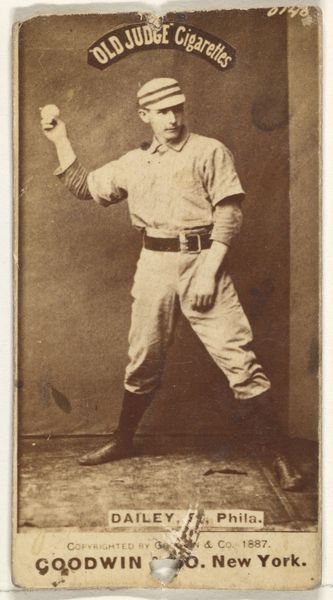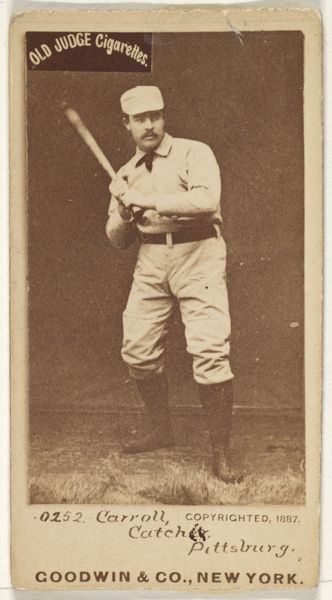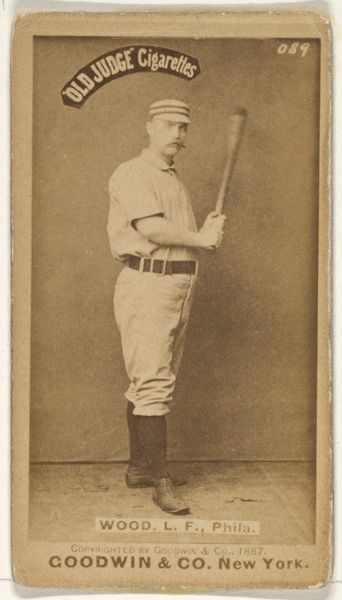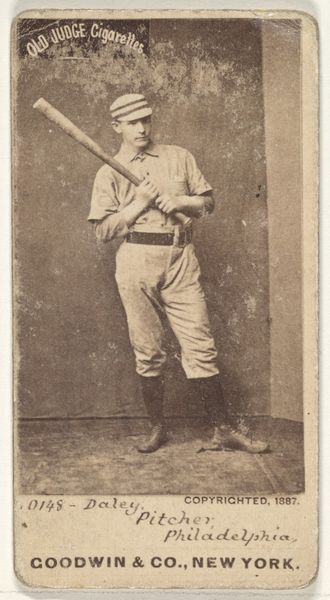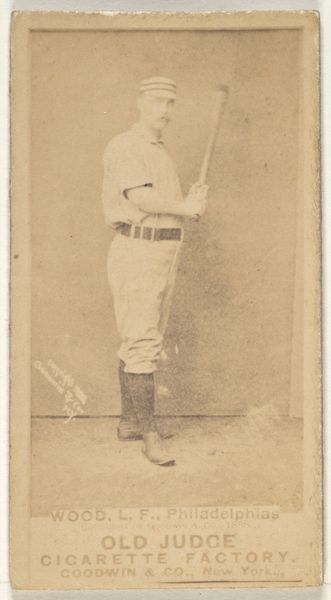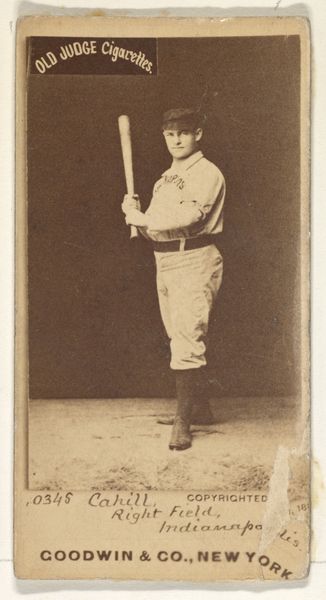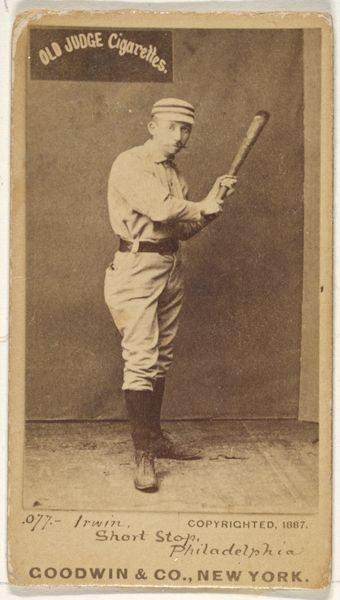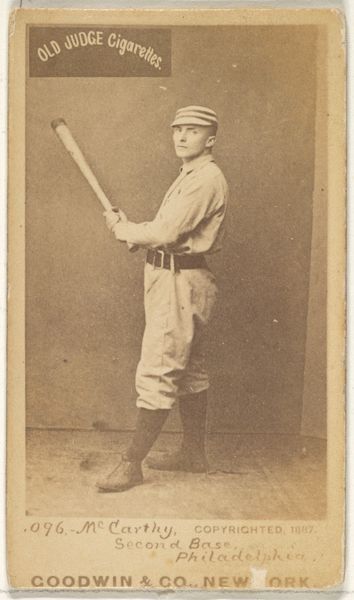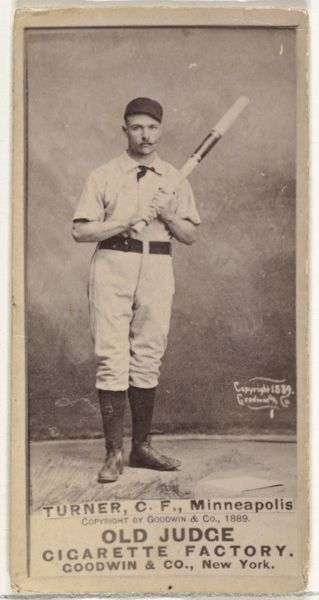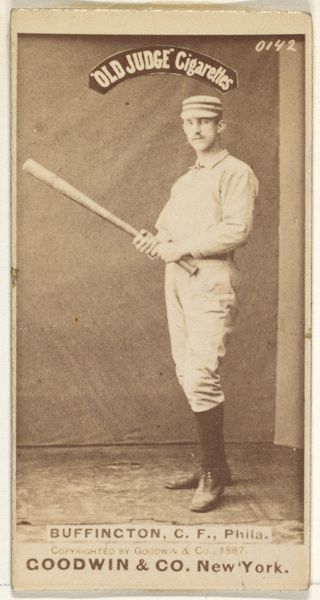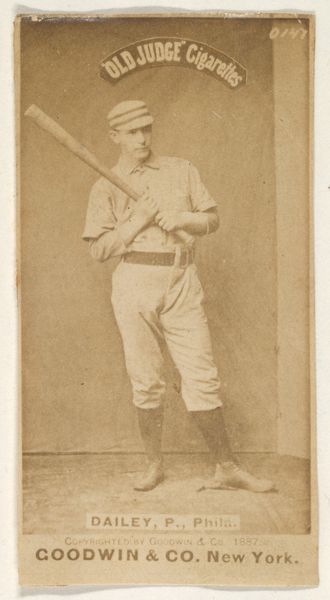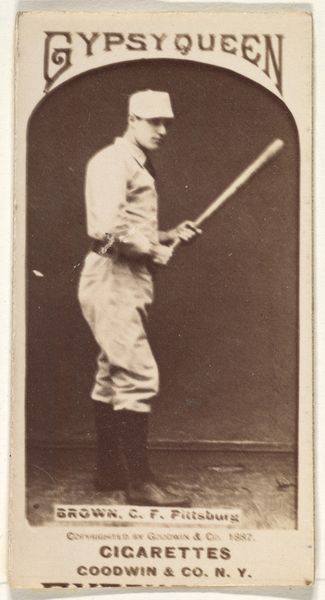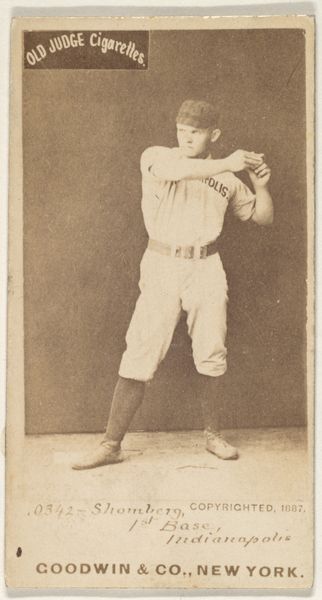
John J. "Jack" Clements, Catcher, Philadelphia, from the Old Judge series (N172) for Old Judge Cigarettes 1887
0:00
0:00
drawing, print, photography, albumen-print
#
portrait
#
drawing
# print
#
baseball
#
photography
#
men
#
genre-painting
#
albumen-print
#
realism
Dimensions: sheet: 2 11/16 x 1 3/8 in. (6.9 x 3.5 cm)
Copyright: Public Domain
Curator: Let’s turn our attention to this rather captivating albumen print dating back to 1887. Titled "John J. 'Jack' Clements, Catcher, Philadelphia," it's from the "Old Judge" series, a set of baseball cards produced by Goodwin & Company. Editor: It strikes me as a surprisingly static image for what I assume is intended to portray an athlete. The pose feels almost…studied, less about the game and more about presentation. I wonder what this tells us? Curator: Precisely. These weren't action shots. Goodwin & Co. produced these cards to be inserted into cigarette packs. Their ubiquity introduced baseball players to the public. Notice the composition: Clements is centrally located, bathed in diffuse lighting to highlight the features of his uniform and the iconic bat he clutches. It's all carefully considered. Editor: Right, these cards circulated through popular consumer culture, impacting sports figure representations in profound ways. Baseball teams turned to performative expressions for marketing rather than organic local events. It brings into focus questions of how baseball culture commodifies labor to feed corporate entities. Curator: A very apt observation. The sepia tone gives it a sense of nostalgia but consider also the texture afforded by the albumen print; there's a delicate quality that makes the image seem both archival and tangible. Also the textual elements placed at the margins of the print contribute to its intrinsic meaning; the textual description of "Old Judge Cigarettes" and the copyright act as framing devices that suggest we view the portrait not only as an image but a product of consumerism. Editor: Indeed, it acts as a microcosm for considering the intertwining realities between popular culture, advertising, and the development of a distinctly American sporting identity during this period of the Industrial Revolution. These Old Judge cards document baseball culture by feeding it as well. Curator: Looking closely, one discerns minor imperfections – subtle tonal variations in the background that further enrich its unique character, underscoring the image’s artisanal nature. Its visual presence communicates with material subtleties, allowing access to the semiotics of form itself. Editor: And that interplay reveals that such images become both representations of individuals and powerful objects participating in larger narratives. Curator: Quite right. This careful arrangement allows us to observe baseball history through a window glazed with the aesthetics of its epoch. Editor: A commercial enterprise leaving a fascinating visual and cultural footprint for subsequent generations.
Comments
No comments
Be the first to comment and join the conversation on the ultimate creative platform.
